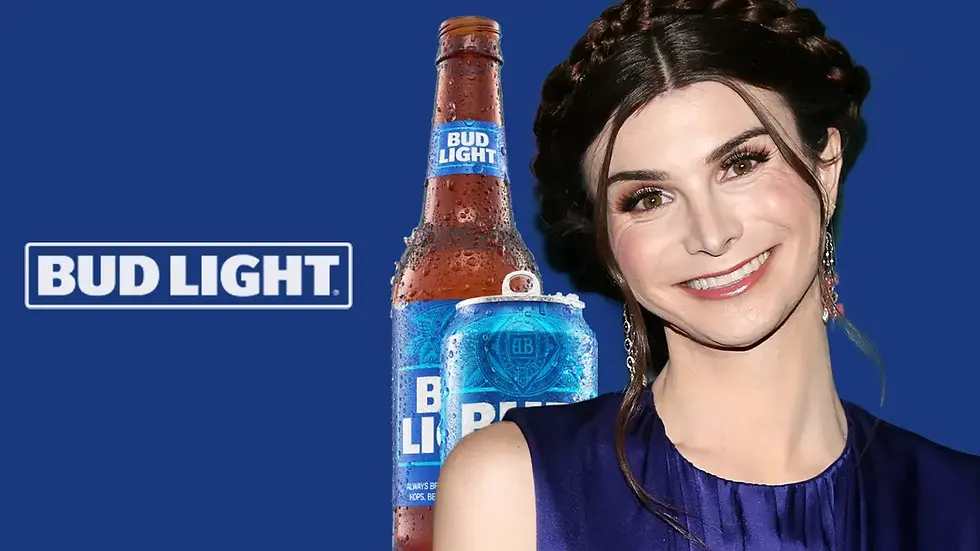Brand Sensitivity in an Age of Conflict: Why Advertisers Must Read the Room
- Sameer Nawab
- Mar 13
- 5 min read
In today’s hyper-connected world, where every ad, tweet, and campaign is scrutinized, advertising no longer exists in a vacuum. Brands don’t just sell products; they tell stories, represent values, and often, intentionally or not, take a stance. As global conflicts, political divisions, and wars dominate headlines, advertisers have no choice but to be acutely aware of the socio-political climate. The cost of ignorance? Boycotts, backlash, and in worst cases, cancellation.
Advertising in the Age of Awareness
There was a time when brands could stay neutral, comfortably selling products without dipping their toes into politics or global issues. But the modern consumer is different. They’re informed, socially conscious, and demand accountability. A single misstep, whether it’s perceived insensitivity, silence during critical moments, or accidental alignment with unpopular sides, can trigger widespread outrage.

Brands Caught in the Crossfire
Some examples illustrate the high stakes of getting it wrong:

Mc Donalds McDonald’s faced significant sales drops in certain regions due to perceived support for Israel during the Israel-Palestine conflict. Consumers in several Middle Eastern and Asian countries called for boycotts, highlighting how global brands can’t afford to ignore geopolitical sensitivities. Recently Stormzy's McDonald’s ad stirred debates about brand partnerships and representation, with some questioning the messaging's relevance and sincerity in the current socio-political climate.

Zara Zara came under fire for a campaign that many interpreted as insensitive to the Palestine conflict. The campaign’s imagery was criticized for echoing scenes of destruction, leading to widespread boycotts and demands for apologies, showing how visual storytelling can carry unintended political messages.

Nicolas Economou/NurPhoto via Getty Images Starbucks saw widespread protests and store closures following its legal battle with its union over pro-Palestinian messages. The backlash demonstrated how corporate decisions in politically charged times could have far-reaching consequences.

Adweek
Bud Light (Budweiser) experienced massive backlash after collaborating with transgender influencer Dylan Mulvaney. The campaign led to declining sales, boycotts, and a drop in market value, showing how polarizing social issues can impact even established brands.

Adidas Stormzy’s Campaign with Adidas received criticism when fans accused the campaign of lacking authenticity and appearing performative amid ongoing racial justice discussions.

Balenciaga Balenciaga faced intense backlash after an ad campaign featured controversial imagery involving children. Accusations of insensitivity and inappropriate messaging led to public apologies and a damaged brand reputation.

Image Credit: New York Times H&M was criticized for an ad featuring a Black child wearing a hoodie with the phrase “Coolest Monkey in the Jungle.” The backlash forced H&M to issue multiple apologies and remove the product entirely.
Navigating Complex Markets

The Canadian market is currently navigating economic uncertainty brought by Trump’s tariffs, impacting sectors like steel, aluminum, and agriculture. Brands are being cautious in messaging, ensuring campaigns reflect national resilience without appearing politically biased. Advertisers must now balance promoting local products while maintaining diplomacy in an increasingly polarized environment.
These cases underline that consumers today expect brands to take ethical stances, but only the right ones. And who decides what’s right? Often, it’s the loudest voices on social media, ready to call out and cancel brands that seem out of touch

.
The New Rules for Advertisers
So, how do brands navigate these treacherous waters? Here’s what advertisers must keep in mind:
Understand the Context: Before launching campaigns, do a geopolitical temperature check. What’s happening globally and locally? How could your message be interpreted?
Stay Authentic: Don’t jump on every social cause or conflict bandwagon for relevance. Consumers can spot performative activism a mile away. Let brand values guide your messaging.
Cultural Sensitivity is Key: A joke in one region could be offensive in another. In times of war and conflict, even harmless campaigns can carry unintended meanings.
Have a Crisis Plan: Prepare for backlash. Be ready to respond swiftly, sincerely, and with humility.
Engage in Active Listening: Monitor conversations. Your audience will often tell you how they feel, pay attention and adjust accordingly.

Photo: Sameer Nawab
The Power and Risk of Taking a Stand
Sometimes, staying neutral isn’t an option. For some brands, taking a stand is part of their DNA. For example, Nike's collaboration with Colin Kaepernick is a prime case. By supporting Kaepernick, who took a knee during the national anthem to protest racial injustice and police brutality, Nike made a bold statement. While the move alienated some audiences, leading to boycotts and public criticism, it ultimately strengthened brand loyalty among its core consumers who valued social justice and activism. The campaign resulted in a 31% sales boost within days of the ad's release, proving that when a stance is aligned with brand values, it can lead to greater impact and deeper customer connections.

Another example is Ben & Jerry’s, a brand that has consistently taken progressive stances on social and political issues, including climate change, racial justice, and refugee rights. Their mission extends beyond selling ice cream; they actively engage in corporate activism by funding initiatives, supporting grassroots organizations, and leveraging their platform to speak out on key issues. For instance, their strong stance against systemic racism and calls for criminal justice reform have sparked both praise and controversy, but their unwavering commitment to their values has fostered a loyal consumer base that appreciates their authenticity.
However, choosing sides in polarizing issues can still be risky. The key is ensuring any stance is genuine and reflective of long-standing brand values, not just a reactionary PR move. In Nike’s case, the brand’s history of supporting athlete activism and empowerment made this bold stand authentic and credible, turning potential backlash into a strategic win that resonated globally. Similarly, Ben & Jerry’s dedication to social justice causes isn’t performative, it’s deeply embedded in their corporate philosophy, making their activism trustworthy and impactful.

A Cancel Culture Reality Check
Cancel culture isn’t always fair, but it’s real. Brands today must understand that even well-intentioned campaigns can face backlash. What matters is how they respond; with transparency, accountability, and genuine efforts to rectify missteps.
Conclusion: Advertising with Awareness
The line between brand messaging and political commentary is blurrier than ever. Advertisers need more than creativity, they need cultural intelligence and empathy. In times of war, conflict, and political upheaval, ignorance is no longer bliss, it’s bad business.
In an era where one wrong move can spark global outrage, the smartest brands are those that stay informed, stay authentic, and most importantly, stay human.
Sources:

Comments